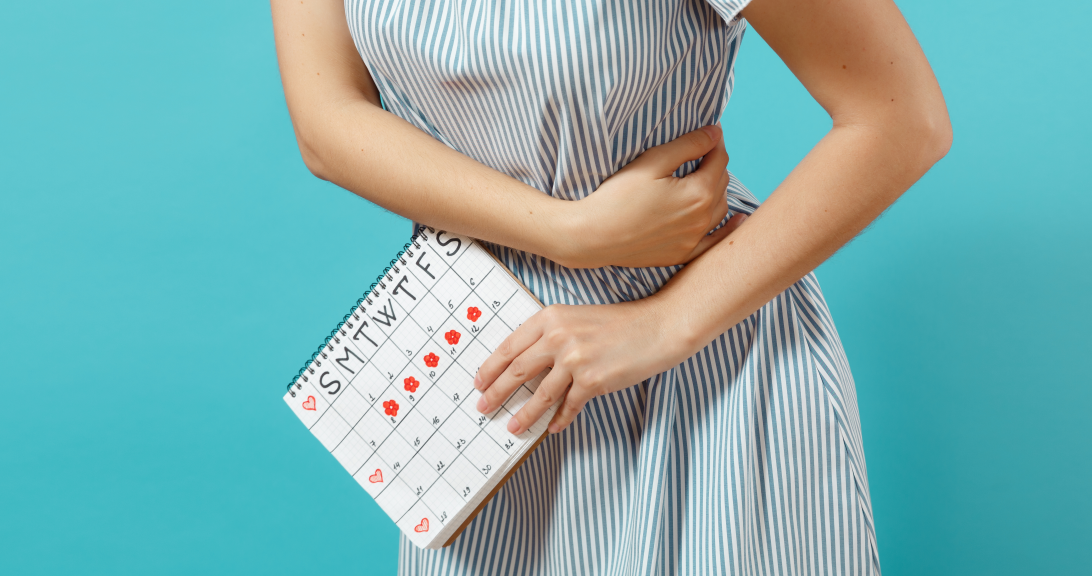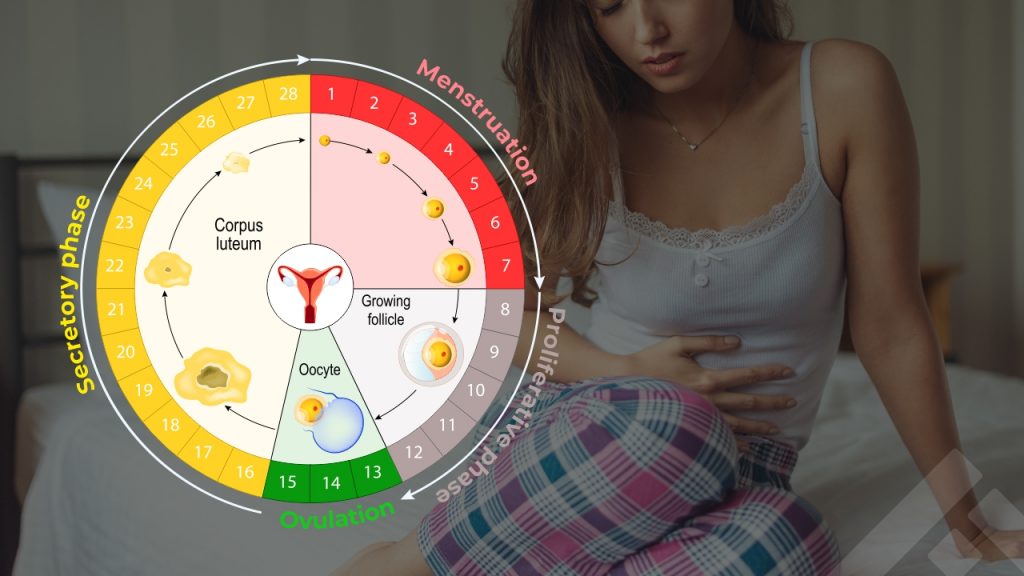
Menstruation: Period Facts You Should Know

Periods are for most women, an uncomfortable, if not stressful time of the month. Menstruation or periods is a natural process, which occurs in women at regular intervals of an approximate lunar month. It involves a complex interaction of hormones secreted by the various centers in the brain and the ovary throughout a woman’s reproductive years.
What happens in menstruation?
Every month, the uterus prepares for a possibility of pregnancy by thickening the uterine wall. Estrogen and progesterone are the hormones that regulate this cycle and pregnancy. If fertilization fails to occur, the levels of estrogen and progesterone drop. The uterine wall sheds along with some blood and passes out through the vagina. The bleeding usually lasts for five to seven days.
But why does bleeding occur?
Your ovary is the resting site for eggs that are released into the uterus after they mature. It is the fate of these eggs that leads either to the pregnancy or menstruation route. The entire menstrual cycle lasts for an average of 28 days and is divided into four phases:

1. Menstrual phase
This is the first stage of the cycle and also the phase where the bleeding occurs. The onset of this phase occurs when the egg remains unfertilized. This causes estrogen levels to drop, and hence the thickened uterine wall for pregnancy sheds as it is no longer needed. A combination of blood, tissue, and mucus is released in the process.
2. Follicular phase
During this phase, luteinizing hormone (LH) and follicle stimulating hormone (FSH) from the pituitary gland stimulate the ovaries to produce five to 20 follicles, which are small sacs that contain an immature egg. FSH stimulates the growth of the follicle. Soon enough, one follicle begins to grow faster than the others and the body starts preparing itself for a possible pregnancy. The follicular phase lasts an average of 16 days. As the follicle grows, the blood estrogen levels rise. The surge in estrogen levels causes you to be in a “happy mood” as compared to the other half of the cycle when the estrogen levels dip.
3. Ovulation phase
LH is responsible for the maturation and eventual release of the egg from the ovary. With rising estrogen levels, there is a sudden release of LH around the 13th day of the cycle. This peak results in the egg’s final maturation and release from the follicle, a process known as ovulation. The egg travels down the fallopian tube into the uterus, where it waits to be fertilized by a sperm. This is the only and the most fertile phase if you’re planning to get pregnant. Ovulation happens halfway through the cycle, ie, on the 14th day of a 28-day cycle.
4. Luteal phase
After the release of egg from the follicle, the follicle changes into a mass of cells, called corpus luteum. This structure is responsible for the production of progesterone that maintains a thick lining of the uterus for the fertilized egg to attach. If no pregnancy occurs, the corpus luteum shrinks, and the level of progesterone and estrogen drops. This phase lasts for an average of 14 days and ends in bleeding, which is called menstruation.
Physical and mental health during the menstrual cycle
The first period that a woman gets is known as menarche, and usually occurs between the age of 12 and 15 years. It is accompanied by changes in size of breasts and uterus, widening of pelvis, and activation of sebaceous glands, leading to acne. Menarche signals the possibility of fertility.
During the period between ovulation and menstruation, many women tend to experience various characteristics such as physical and mental changes. These can become more pronounced around five to six days before the start of menstruation, and is called Premenstrual Syndrome (PMS)
There may be physical symptoms like exaggeration in acne, feeling of bloating, cramps in the lower part of abdomen (dysmenorrhea), tiredness, and sore breasts. Mentally, symptoms such as mood changes, anxiety, irritability or emotional spells. Although the exact cause of PMS is unknown, the symptoms can get worse with high salt and caffeine intake as well as stress.
Menstrual fluid
The menstrual fluid or menstrual blood, is made up of blood, vaginal secretions and other substances like dead cells, and nutrients like iron, calcium, phosphorus, and proteins. Bleeding usually continues for two to seven days. Any bleeding for less than two and more than seven days should be reported and investigated. Normally, 10ml-80ml of menstrual fluid (one to six teaspoons) is discharged every month.
Since a lot of iron and calcium is lost from the body during menstruation, it is important that it is balanced with adequate dietary intake.
Diet during menstruation
Since menstruation results in a lot of hormonal changes in the body, it’s essential to consume a nutritious diet to keep you healthy. Make sure your diet includes:
Water
Constant hormonal changes during periods cause water retention, affecting your digestive system, and making you feel bloated and constipated. Drinking water not only alleviates bloating, but also reduces dehydration headaches and cramps.
Fruits and green leafy vegetables
It is common for your iron levels to dip during menstruation leading to fatigue and dizziness. Dark green leafy vegetables such as romaine lettuce, spinach, beet greens, and collard green are rich sources. Having a diet rich in vitamin D and calcium can help ward off PMS symptoms.
Fish
Oily fish such as salmon and tuna are a great source of omega-3 fatty acids, which can help in managing menstrual pain and mood swings.
Nuts
Rich in omega-3 fatty acids, vitamin E, and protein, nuts help in preventing soreness in the breasts. Almonds especially, are rich in magnesium, which helps relieve the symptoms of dysmenorrhea.
Dark chocolate
It’s a great source of magnesium and iron, and helps in relieving PMS symptoms. It boosts the production of serotonin, the happy hormone.
Ginger
It is packed with anti-inflammatory properties, which can help relieve symptoms of dysmenorrhea. But note that consuming ginger in large quantities can lead to heartburn and stomach ache.
It might be a good idea to avoid:
Alcohol
It can elicit an adverse reaction by dehydrating your body and worsening your headaches and bloating. Additionally, hangovers can lead to nausea, vomiting, diarrhea, and fatigue.
Foods high on salt and sugar
Excess salt in processed food results in water retention and eventually, bloating. Too much sugar spikes your blood sugar level leading to painful cramps and acne breakouts.
Spicy food
If you have a sensitive tummy, spicy food can cause stomach pain, diarrhea, and bloating. However, chili is known for its anti-inflammatory properties, so the key is to moderate the intake.
Can you exercise during periods?
Your estrogen and progesterone levels are at an all-time low during menstruation. This explains the feelings of tiredness and lack of energy. However, exercising during periods has its benefits.
1. It helps in improving your overall mood. It increases blood circulation, combats fatigue, and boosts energy levels.
2. Exercising gives you a natural endorphin high that helps you feel better. Endorphins are also a natural painkiller and can help you manage period cramps, lower back pain, and uneasiness.
3. If you suffer from irregular periods, physical activity can help in regularizing your cycle. Maintaining a healthy weight can help balance the hormones.
You need not perform rigorous exercises during menstruation if you don’t feel like it. Walking, yoga, pilates, and aerobics are some exercises you could do. The key is to be realistic and listen to your body.
References
1. Frothingham S. Why Do Women Have Periods? Healthline. https://www.healthline.com/health/why-do-women-have-periods (accessed Mar 3, 2021).
2. The Menstrual Cycle. UCSF Health. https://www.ucsfhealth.org/education/the-menstrual-cycle (accessed Mar 3, 2021).
3. Menstruation. Planned Parenthood. https://www.plannedparenthood.org/learn/health-and-wellness/menstruation (accessed Mar 3, 2021).
4. Watson S. Stages of the Menstrual Cycle. Healthline. https://www.healthline.com/health/womens-health/stages-of-menstrual-cycle (accessed Mar 3, 2021).
5. Fletcher J. What should you eat on your period? Medical News Today. 2020; published online Mar 11. https://www.medicalnewstoday.com/articles/what-to-eat-on-your-period#overview (accessed Mar 3, 2021).
6. Ferguson S. 16 Foods to Eat (and Some to Avoid) During Your Period. Healthline. https://www.healthline.com/health/womens-health/what-to-eat-during-period (accessed Mar 3, 2021).
7. Lindberg S. Can You Exercise on Your Period? Healthline. https://www.healthline.com/health/exercise-during-period (accessed Mar 3, 2021).
8. Omidvar S, Amiri FN, Bakhtiari A, et al. A study on menstruation of Indian adolescent girls in an urban area of South India. J Family Med Prim Care 2018; 7: 698–702.
9. Normal Menstruation. Cleveland Clinic. https://my.clevelandclinic.org/health/articles/10132-normal-menstruation (accessed Mar 22, 2021).
10. What happens during the typical 28-day menstrual cycle? Office on Women’s Health (womenshealth.gov) https://www.womenshealth.gov/menstrual-cycle/your-menstrual-cycle (accessed Mar 22, 2021).
11. Women’s Health. Mayo Clinic. https://www.mayoclinic.org/healthy-lifestyle/womens-health/in-depth/menstrual-cycle/art-20047186 (accessed Mar 22, 2021).














